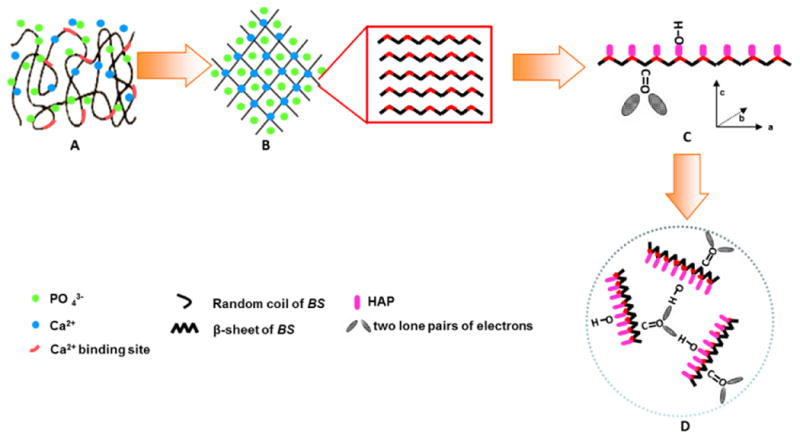Figure 1.

Schematic illustration of BS-mediated biomineralization when BS is incubated in 1.5 SBF. (A) BS with a random coil structure is exposed in the environment containing Ca2+ and PO43-, (B) Ca2+ binding by the anionic side-chains of BS drives the hydrogen bonding and triggers the conformational change of BS into β-sheet structure and the concomitant self-assembly into a nanofibrous network-like matrix; (C) The nanofibrous network-like matrix with β-sheet structure in turn initiates the nucleation of crystalline HAP nano-needles. The two lone pairs of electrons in the C=O groups of -COO- ion of BS acted as a “proton receptor site” to attract the “proton donor site” of O-H in HAP crystals, resulting in the formation of O— H•••O hydrogen bond. It should be noted that the O-H bond in HAP crystal structure is parallel to c-axis of HAP crystals.25-27 (D) The HAP nano-needles in the self-assembled BS matrix are further assembled into globule-like clusters due to the hydrogen bonding between C=O group in BS and O-H group in HAP crystals. BS triggers and mediates the oriented nucleation of HAP crystals during the whole process of the mineralization.
